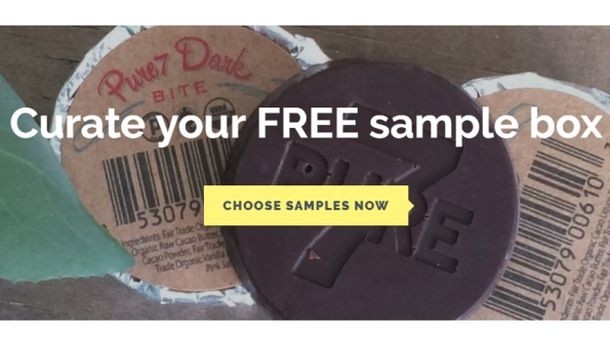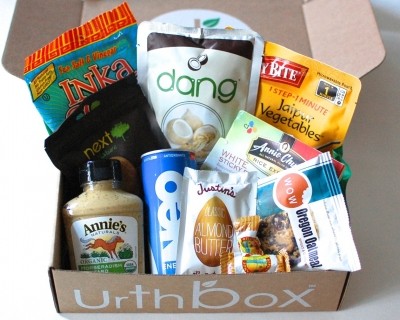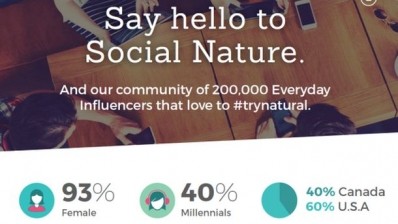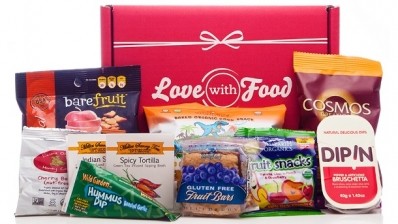How do you get honest feedback from target consumers without breaking the bank?

“People are not super honest when they are in front of you, they tell you your product is great even though they know they are never going to actually buy it.”
So how can emerging brands reach a larger number of target consumers and gain more honest feedback about their new concepts or products, without breaking the bank or spending a fortune on traditional focus groups (of which Knudsen is not a big fan)?
Enter TrySome – a start-up working with CPG brands (partners include Barnana, Hippeas, and Go Raw) that want a more efficient way to test the market, get consumer feedback, create a buzz, or demonstrate engagement to retail buyers or potential investors.
Quality feedback
Unlike some subscription services offering a curated selection of new snacks or other products for consumers to try, TrySome users actively select three samples a month of products they are interested in (TrySome asks for info including age, gender, income, occupation and other basic demographic details).
They are also charged a small amount ($1.99) for shipping, which might not sound like a great business model for a start-up trying to get consumers to try something new, but actually ensures that TrySome users are engaged, and likely to generate more quality feedback for its CPG clients, says Knudsen.
“With a lot of these services, it’s push marketing. People sign up and they get sent a box full of products, but they don’t choose anything. And if you’re just given something for free, everyone loves free stuff, but we want to know what people are actively choosing, and whether they are interested enough to pay for it.
“With TrySome, when your box of samples arrives each month, you have to fill in a 10-question survey
TrySome testers select three product samples for each 30-day period (shipping costs are $1.99). By selecting a sample, they agree to participate in a short survey about the product.
[created by the client] that’s specific to each product, and if you don’t fill in the survey, you won’t be allowed to choose products next month. And because it’s not face to face, the feedback our partners are getting is much more honest.”
If TrySome users also want to post about their experiences on social media, they can, but it’s not a requirement, he says.

The basic premise of TrySome, says Knudsen – who grew up in Denmark but now lives in Brooklyn - is simple: “If we can lower the financial barriers for consumers to try products that match their values, and we can help manufacturers gain information about what consumers think so we can lower failure rates, then we have a win-win situation.”
Flavors, packaging
So what are 55+ CPG brands that have started working with TrySome trying to find out?
In many cases they want feedback on the overall product experience, the taste, texture, packaging, which you can only get from physically sampling it, he says. But TrySome also conducts online-only tests for CPG clients primarily interested in running flavor ideas or new packaging designs in front of target consumers.
“We can set up the product so there is, say, a green pack, a blue pack and a yellow version of the design on the website and we can see which one our users select. Maybe 800 people pick the yellow one and their demographic looks like this, and 200 picked the blue one, and their demographic looks like this. Who are you going after?
“We’re also building a back end for manufacturers so they can focus their resources on targeting people that are in a particular demographic, so that only people meeting their criteria will even see their products.
“We are also working on an e-commerce site that we could switch on tomorrow, so people can actually buy the products that they sample.
“But our real business opportunity is going to be in data. Retail buyers are scouting for new and innovative products and if we can add our data to the equation based on what we know about new products that our community is sampling, they are not just making their decisions based on gut instinct.”
SPINS or Nielsen can tell you how products that are already on the shelf are performing, but they can’t tell you want level of consumer interest there is in new products, or products that have not even launched yet, he points out.
Health-focused consumers
So how are things going so far?
“We’ve only been live for a few months, so it’s very early days,” says Knudsen, “but I’d like to have hundreds of thousands of users over time.
“We actually just picked up 5,000 new users in a few hours after we featured TrySome in a Pilates-related newsletter that went out from a studio in New York with a promo code offering free shipping, so we immediately started building lists of yoga studios and health clubs to find people that are already interested in health so that we can replicate this.
“Our partner brands want to reach these kinds of consumers.”
Apply to become a TrySome tester HERE.









